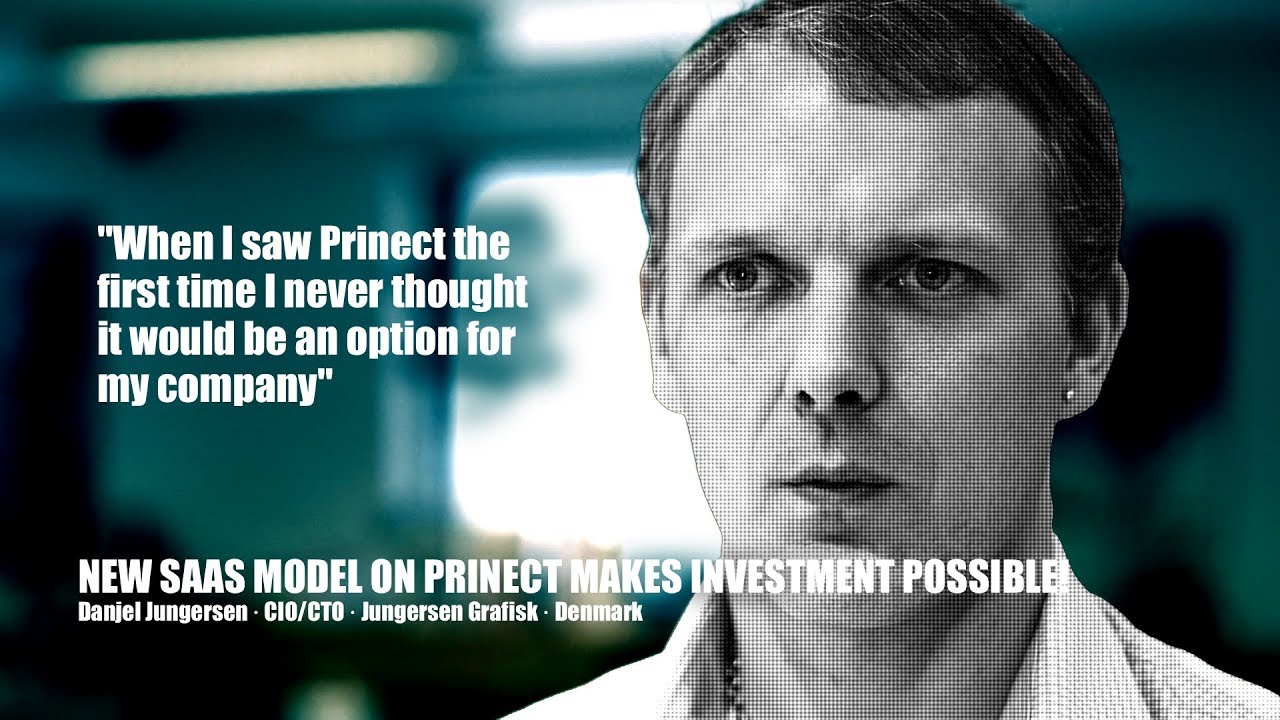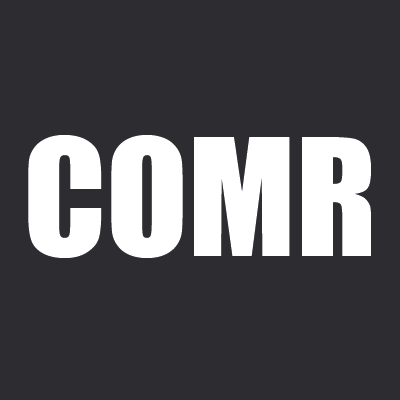New SaaS Model on Prinect Makes Investment Possible · Danjel Jungersen · Jungersen Grafisk
Danjel Jungersen is the CIO/CTO of a small family-owned printing company in the suburbs of Copenhagen, Denmark. The company survives on excellent service, fast turn-around time and high quality but regardless of these virtues the company needs to invest in the future. Danjel Jungersen has for some time been wondering about what steps to take to be profitable and able to deliver what the clients needs – and the decision investing in Heidelberg Prinect was decided – also based on the new SaaS model offered by Heidelberg.
We met with Jacob Hededam Hummel and Brian Thorsgaard Hansen from Heidelberg at Jungersen Grafisk to talk about why Prinect in their opinions is the right choice.
To visit a small printing company with 6-7 people employed a full-featured Prinect solution isn’t the most common thing for us to run into but its always interesting to see the many different approaches to the future many different printing companies choose.
Workflow is always a very hot topic on INKISH.TV, so enjoy this episode and hopefully find inspiration for your own printing company!
I’m working for Heidelberg corporate product management, and as for the last two and a half years, assisted the Prinect Group with improving the business model of software. But at the same time I’ve been the lead in developing entire new business intelligence platform. We have for 15 years talk about integration, JDF workflows and how to automate, and Prinect, which is our software portfolio, has actually been built exactly to do that.
But the complexity of having these workflows and incorporate them into print houses like Jungersen which we are visiting today has been a hard process. We have learned that, and the customers have learned that. So we needed to change something because we truly believe that the only way that these guys can be profitable is to have an infrastructure which is automating most of the touch points on the work tasks that they have to do everyday. So we needed to narrow down all the complexity of our software portfolio, and we also needed to change the business model. Because the strategy and our idea is that everybody should afford to have this automated platform as infrastructure into their print house.
We are having too many touch points, so the the lead time of a specific order in house is taking too long or has too many times that we need to take an auto bag and try to understand what is my words that-
All kinds of workflows will assist a print shop to reduce those kinds of tasks. The benefit with Prinect is that it actually, depending on what you need as a printout, it reaches out to all the corners of your business. So if you have issues on how to integrate your customers, Prinect can do that. If you have estimation improvement needs, Prinect can do that. Obviously the processing of pre press with all the positionings and color management, call inside Prinect. Presets of the production part, the presses, the post press and all the time gathering information into how can we actually improve when we finalize all the productivity and look at the business intelligence part of it.
We had an order management system, was very old and had a lot of manual process, and we had a lot of work that had to be done again and again in different systems. We have a sales person doing a quote, we have a sales person doing an order, they couldn’t be copied, but when the order is made the same, the information is entered into the current workflow, and it’s a manual process.
It was a manual process, and besides taking long time, it was also error prone.
At some point we had to change. Yes. I think that’s necessary for lots of companies if they want to stay in the market. And we saw an opportunity to find a system that could both automate and do some of the manual work automatically, and some of the manual work that had to be done is easier to get done, and that’s the main reason.
And the second reason was integration all the way through the system. Both ways get data from the processor, from the production back to the system so we can analyze and see where we have problems or where we have places where we could optimize a bit.
Integration through our system, and with other system as well is something we focus on in Heidelberg and the low hanging fruit for our company will maybe be to have the press integrated into the system. So pre settings for the equipment could be done.
The communication at trade shows has until recently been about CIP4 and CIP3 and all these technologies which makes integration possible. And I would like to go away from that and talk about the benefit of integration because as long as you have a module working for you in every work step, you don’t have to worry and think about how is this working, and how is this working is too complex for our customers.
They are excellent at producing print, high quality, and that is where the concentration and their mindset should stay at, talking about the technology of how to improve. Leave that up to us, make it happen below the surface. So forget about CIP3 and CIP4. Just talk about the benefit of having an integrated platform.
I heard some lectures about things that could be done, and to be honest, I never thought that it would be possible in my company, but we thought we could pick out little components and use that in our company. And we looked at different systems trying to figure out how this is done. And we found out that these systems were either very complex or very expensive or very limited.
After some time, we found out that this is the way to be done. And then again a long process in deciding how this should be done. And then of course a long talk with Heidelberg about how this system could help us and if this system was the correct one for us.
when I started up talking to Jungersen about our software, he was focused on “Oh, this software is way too expensive.”
A couple of years ago we started up with a new subscription model. So the entry level for a smaller company like Jungersen is easier done than before.
First of all, we need, as I said, we need to simplify the possibilities of what should you purchase. So because as you say, a small or midsize company like the one that we’re visiting today, they have two handfuls of different suppliers was knocking at that door and delivering business cards with their world class solutions every day.
So how to navigate inside and how to actually decide this is the direction that I want to go. With simplifying the opportunities with workflow, that message is much more clear to attack. What do you want to achieve? What is your timeline, and how much do want to invest in it, money wise and people wise?










































































